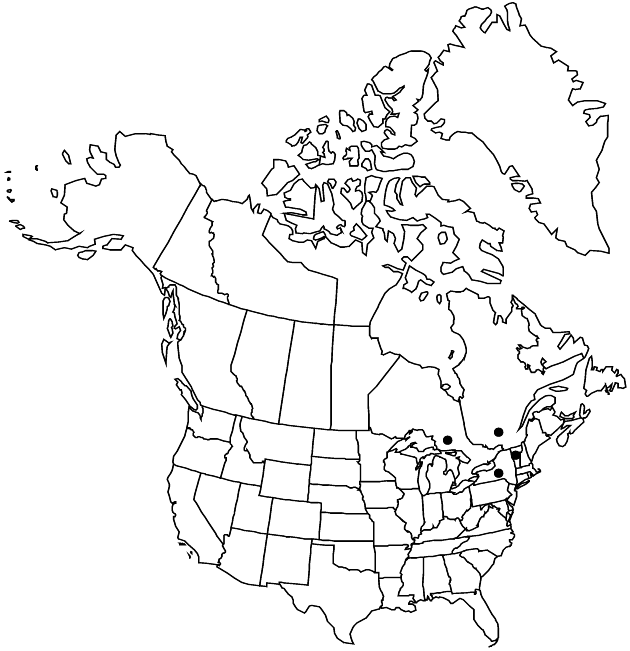Erigeron philadelphicus var. provancheri
Naturaliste Canad. 89: 72. 1962.
Common names: Vergerette de Provancher
EndemicConservation concern
Basionym: Erigeron provancheri Victorin & J. Rousseau Contr. Inst. Bot. Univ. Montréal 36: 58. 1940
Perennials 4–18 (–20) cm. Stems mostly glabrous. Leaves: basal persistent through flowering; cauline faces glabrous or glabrate. 2n = 18.
Phenology: Flowering May–Aug.
Habitat: Crevices in shale or dolomite, usually beside rivers or lakes, receiving splashed water
Elevation: 0–50 m
Distribution

Ont., Que., N.Y., Vt.
Discussion
Of conservation concern.
Erigeron philadelphicus subsp. provancheri (Victorin & J. Rousseau) J. K. Morton is not a valid name.
Selected References
None.
Lower Taxa
None.
... more about "Erigeron philadelphicus var. provancheri"
introrse +
connate +
distinct +
herbaceous +
scarious +
hirsute +
papillate +
corymbiform +
continuous +
persistent +
decurrent +
1-nerved +
linear;lanceolate oblanceolate or spatulate +
ribbed +
stigmatic +
barbellate +
persistent +
15;20 +
absent +
simple +
reduced +
Vergerette de Provancher +
absent +
2-nerved +
dimorphic +
0.6mm;1.1mm +
absent +
staminate +
straight +
eglandular +
distinct +
proximal +
1;5 +
bisexual +
dispersed +
indeterminate +
3;35 +
surrounding +
turbinate;hemispheric +
alternate +
erect;spreading +
deltate +
2-carpellate +
inferior +
attached +
anatropous +
tough +
thick +
pistillate +
absent +
connate +
persistent +
distinct +
falling +
unequal +
equal +
Naturaliste Canad. +
1962 +
pistillate +
absent +
fertile +
epaleate +
pitted +
flat;conic +
fibrous +
exalbuminous +
modifed +
2;3 +
stramineous +
persistent +
connate +
falling +
alternate +
erect +
glabrous +
deltate +
2-branched +
glabrous +
Erigeron philadelphicus var. provancheri +
Erigeron philadelphicus +
variety +
indurate +
shorter +
fibrous-rooted +
perennial +